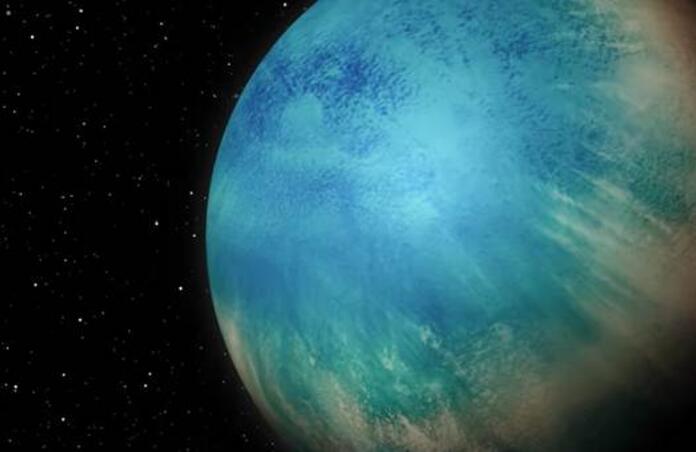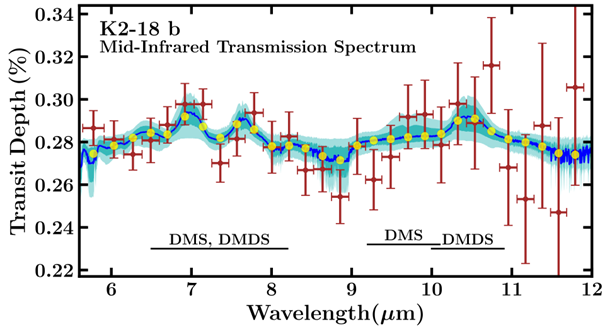Dimethyl Sulphide Identified as Potential Biosignature in Exoplanet Atmosphere

The exoplanet K2-18 was discovered in 2015 and has since emerged as one of the most promising candidates in the search for habitable worlds. This began in 2019, when observations suggested the presence of water vapor in its atmosphere, a key ingredient for life. Soon after, researchers proposed that K2-18 b might belong to an emerging class of exoplanets known as Hycean worlds. These are ocean-covered planets with hydrogen-rich atmospheres capable of supporting habitable conditions beneath a thick gas layer. Subsequent studies, particularly those using the James Webb Space Telescope (JWST) in 2023, supported this interpretation, detecting atmospheric signatures of methane and carbon dioxide, consistent with Hycean models.
Most intriguingly, JWST data also hinted at the possible presence of dimethyl sulfide (DMS). As far as we know, molecule does not occur abiotically. On Earth, it is produced almost exclusively by marine life such as plankton and algae. That said, this detection remained tentative, with the researchers committing to a 95% (2σ) confidence interval.

Now, a team led by Nikku Madhusudhan presents new constraints on the DMS within the atmosphere of K2-18, leveraging new data, and promoting their confidence of detection to 99.7% (~3σ). The team again leveraged the JWST, collecting almost six hours of data using its Mid-Infrared (MIR) instrument across 5-12 μm. This data was comprised of a transit (2.68 h) as well as pre- and post-transit data to establish a baseline. Molecular bonds are particularly sensitive to infrared radiation, thus, as starlight passes through the atmosphere of K2-18, the spectrum emerges with discrete gaps corresponding to the transition energy of these bonds. The result is detected as an absorption spectrum.

The team identify spectral lines within the ranges 6.8–8 μm and 9–11 μm, which correspond to known transitions within DMS and DMDS. The issue is that these lines are extremely weak and could very well simply be the result of noise, rather than an actual detection. To resolve this the team built an atmospheric model, containing 20 molecular candidates in an attempt to find the mixture that would best replicate the observed spectrum. Not only this, but their models would also vary parameters which controlled cloud properties, atmospheric temperatures, pressure levels and even additional systematic offsets. They then compared how well their models performed with and without DMS and DMDS present.
Their results gave them a 2.9-3.2 σ confidence interval for detection. This would mean that should these molecules not be present, there is ~0.3 % chance to see data this extreme. While this would much more strongly point in favour of the detection of these molecules, astronomical observation typically requires a 5 σ interval to achieve a consensus. Nevertheless, this is one of the most promising pieces of evidence to date pointing toward extraterrestrial life. The authors now call for additional follow-up observations to strengthen the statistical confidence of their findings. They also propose expanding the parameter space in future retrievals by including a wider range of molecular species, ensuring that alternative explanations for the observed spectral features can be thoroughly ruled out.
--
Journal Source: N. Madhusudhan et al, New Constraints on DMS and DMDS in the Atmosphere of K2-18 b from JWST MIRI, The Astrophysical Journal Letters, Vol. 983, No. L40, (2025), DOI: https://doi.org/10.3847/2041-8213/adc1c8
Cover Image Credit: Benoit Gougeon, Université de Montréal
